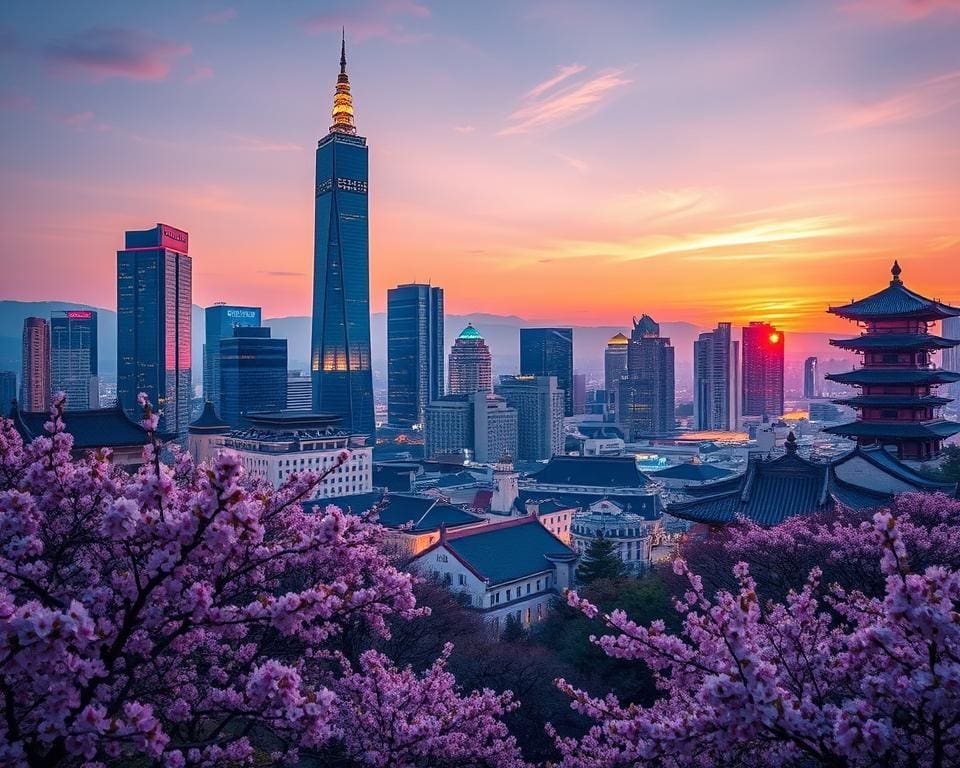Seoul is a city that thrives on contrasts, where the modern skyscrapers reach for the skies while the majestic palaces whisper stories of a rich heritage. In South Korea’s vibrant capital, the skyline is dominated by architectural wonders such as the Lotte World Tower, one of the tallest buildings in the world, showcasing the city’s commitment to contemporary design. Alongside these urban landmarks, the historic Gyeongbokgung Palace stands as a testament to the grandeur of the past, enticing visitors to delve into its captivating history.
Moreover, Seoul has become a global epicentre for K-Pop culture, infusing the city with an electrifying energy that attracts millions of fans. This dynamic blend of innovation and tradition makes Seoul not only a visual wonder but also a cultural haven, offering countless experiences ranging from exhilarating concerts to tranquil palace strolls. Immerse yourself in this unique cityscape, where every corner reveals the harmonious coexistence of tradition and modernity.
Exploring Seoul’s Iconic Skyscrapers
Seoul’s skyline impresses with an array of innovative skyscrapers that stand as urban landmarks, symbolising the city’s rapid growth and contemporary vision. Among these, the Dongdaemun Design Plaza serves as a testament to modern design and cultural significance.
The Architectural Marvels of Dongdaemun Design Plaza
The Dongdaemun Design Plaza, crafted by the renowned architect Zaha Hadid, showcases a unique blend of futuristic aesthetics and practicality. This architectural wonder features fluid forms and open spaces, creating an inviting atmosphere for design enthusiasts and tourists alike.
Views from N Seoul Tower: A Panoramic Cityscape
At the heart of the city, the N Seoul Tower offers breathtaking 360-degree views that mesmerise visitors. This iconic structure not only provides a romantic setting, particularly at sunset, but also serves as a vantage point to appreciate Seoul’s sprawling metropolis, a true reflection of its modern skyscrapers.
The Influence of Modern Design on Urban Landmarks
Contemporary architectural trends shape urban landscapes globally, and Seoul proudly embodies this evolution. The city’s skyscrapers reflect innovative designs that integrate technology and artistry, thus redefining traditional urban landmarks with a modern flair.
Eco-Friendly Skyscrapers: Sustainability in Seoul’s Architecture
Sustainable architecture is increasingly influential in Seoul’s development. Many new skyscrapers incorporate eco-friendly practices, striving for energy efficiency and minimal environmental impact. This commitment fosters a greener urban environment, encouraging residents and visitors to embrace sustainable living.

Seoul: Skyscrapers, Palaces, and K-Pop Culture
The exploration of historic sites in Seoul offers a remarkable glimpse into the nation’s rich cultural heritage. Two of the most significant palaces—Gyeongbokgung Palace and Changgyeonggung—stand as testaments to Korea’s royal legacy. Their grandeur attracts visitors from across the globe, eager to delve into the stories embedded in their walls.
Historical Significance of Gyeongbokgung Palace
Gyeongbokgung Palace, established in 1395, is the largest of the Five Grand Palaces in Seoul. It serves as a cultural landmark, symbolising the power and influence of the Joseon Dynasty. Architecture enthusiasts marvel at its intricate designs and majestic grounds. As a site where numerous historical events unfolded, it plays a crucial role in Korean tourism, capturing the imaginations of both locals and international visitors. Guided tours and cultural performances enrich their experience, allowing for a deeper understanding of Korean history.
Changgyeonggung: Connecting History with Modernity
Changgyeonggung offers a unique perspective, showcasing the blend of ancient traditions and contemporary influences. Originally built as a residence for queens, this palace has undergone meticulous restorations that mirror the evolution of Korean architecture. It stands as a beautiful example of how historical significance can coexist with modernity. Visitors appreciate the tranquil surroundings and thoughtfully curated exhibitions, which bridge the gap between Korea’s past and present.
The Role of Palaces in Korean Tourism
Palaces in Seoul are more than just tourist attractions; they are vital venues for various cultural events and educational programmes. These historic sites engage visitors in experiences that highlight Korea’s royal heritage. From traditional ceremonies to seasonal festivals, activities abound, ensuring that the cultural heritage remains vibrant and accessible. By visiting these palaces, tourists contribute to the preservation and appreciation of Korea’s rich history.
The Vibrancy of K-Pop Culture in Seoul
The K-Pop culture has become an undeniable force, illuminating Seoul as the epicentre of South Korea’s entertainment landscape. In bustling districts like Gangnam and Hongdae, the rhythm of K-Pop can be felt everywhere—music studios hum with creativity, performance venues host electrifying shows, and fan meeting spots buzz with excited fans. This thriving music industry not only entertains but also serves as a vital contributor to the nation’s economy through its multifaceted cultural exports.
The remarkable rise of global superstars such as BTS and Blackpink showcases K-Pop’s unprecedented reach and transformative power. Their infectious music and captivating performances have won the hearts of millions, sparking a genuine passion for South Korean culture across the globe. As a result, tourists flock to Seoul for concerts, merchandise, and unique entertainment experiences that celebrate the K-Pop phenomenon, thus enhancing the cultural influence of the nation on an international stage.
Importantly, K-Pop acts as a cultural bridge, fostering increased interest in not just music but also the Korean language, fashion, and lifestyle. This reverberation of cultural influence connects diverse communities and creates a shared experience that transcends geographical boundaries. As the K-Pop wave continues to rise, it showcases the vibrancy of South Korea’s dynamic culture, promising an enduring legacy that resonates with future generations.









